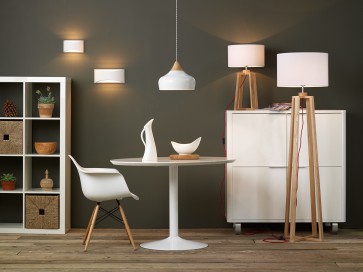 If youÔÇÖve been admiring the cool, calm and collected look, that is all things Scandinavian – then there is no better time than Spring to inject some clean, Nordic inspired lines into your living space.
If youÔÇÖve been admiring the cool, calm and collected look, that is all things Scandinavian – then there is no better time than Spring to inject some clean, Nordic inspired lines into your living space.
There are some key design tips which we can take from this simple style. From plenty of light to pale wood, organic materials to muted tones, there are a multitude of ways you can make this look work in your home.
Let the light in
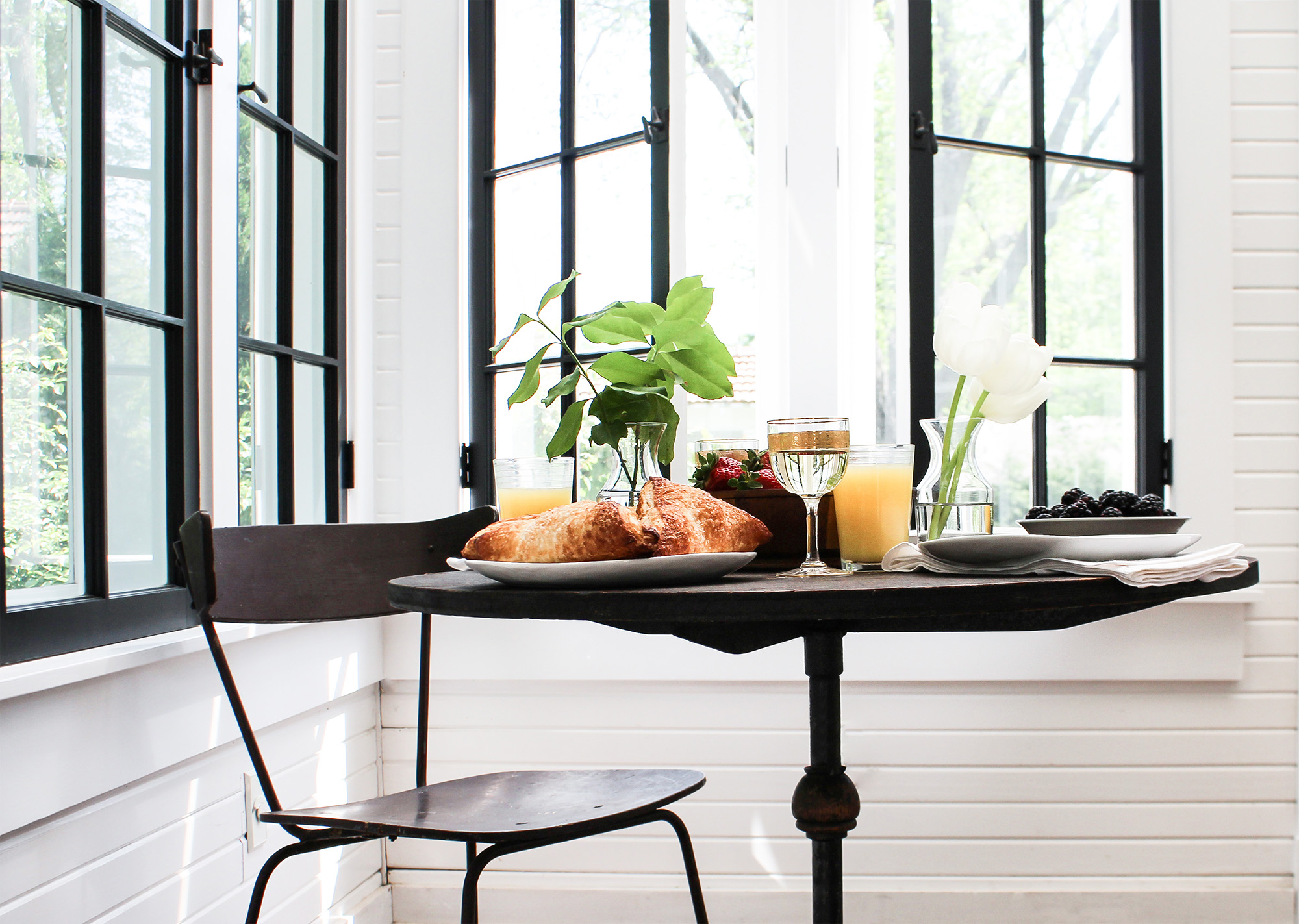 Not featuring much in in the way of curtains or window drapes, the Scandi look aims lets in as much light as possible. While some may bolt at the idea of losing a trusty pair of curtains, there are ways to maximise the amount of light that you let in through a window. Hanging them a few inches higher and wider than usual, will allow more of the fabric to sit against the wall, as opposed to the window. Using thinner fabric for blinds will stop you blocking the light from seeping through, and still allow you to keep your nosy neighbours out!
Not featuring much in in the way of curtains or window drapes, the Scandi look aims lets in as much light as possible. While some may bolt at the idea of losing a trusty pair of curtains, there are ways to maximise the amount of light that you let in through a window. Hanging them a few inches higher and wider than usual, will allow more of the fabric to sit against the wall, as opposed to the window. Using thinner fabric for blinds will stop you blocking the light from seeping through, and still allow you to keep your nosy neighbours out!
Mirrors are great for bouncing light around a room. Position mirrors strategically opposite windows, and use reflective flooring like a wood laminate or floorboards to achieve the same effect.
Candlelight can add a calming atmosphere both inside and out. Bare bulb lighting is also a popular Scandinavian trend. Use stark bulbs on a flex, or diffuse the light through neutral light shades.
Add wood
 A huge characteristic of Scandinavian design is wood. Be it floors, walls or furniture, the use of natural materials allows you to bring the outside in. Rustic wooden tones ooze elegance and make a cozy and inviting living space. Add a characteristic bench or stool, or go the whole hog and panel the walls.
A huge characteristic of Scandinavian design is wood. Be it floors, walls or furniture, the use of natural materials allows you to bring the outside in. Rustic wooden tones ooze elegance and make a cozy and inviting living space. Add a characteristic bench or stool, or go the whole hog and panel the walls.
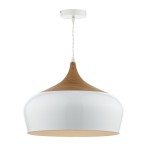 Use a (predominantly) white palette
Use a (predominantly) white palette
Fresh, clean, modern ÔÇô white is the way forward when it comes to achieving the calm and peaceful nature synonymous with this style. Whitewashed walls are common, and adding accents of black to create a monochrome palette is stereotypical of the Scandi style. You donÔÇÖt have to limit yourself though. Throw in pastels to add charm and colour.
Declutter like never before!
Minimal is the only way to create a ÔÇÿcleanÔÇÖ look. If you loathe hiding your clutter, then you will naturally find this harder to achieve than some. Take note, accessories must be functional and unpretentious or heirlooms with a history.
Keep it natural
Alongside wood, donÔÇÖt be afraid to throw wool, sheepskin, plants and branches into the mix. Varying natural textures adds a certain ÔÇÿorganicÔÇÖ homeliness to the look. A wood burner can only add to the charm.
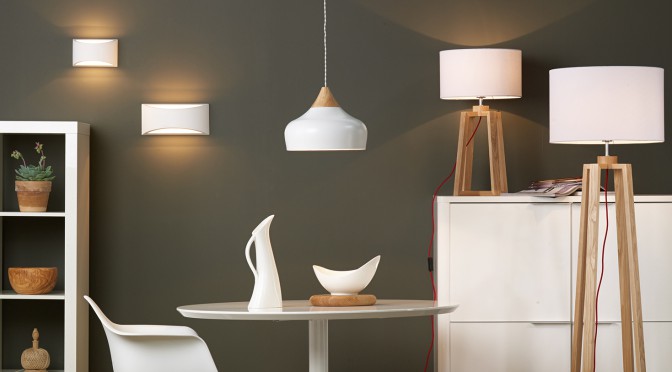
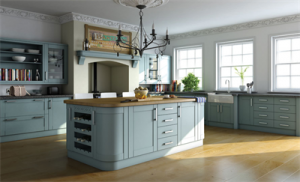 Buying a property is a huge investment, not only financially but also emotionally and time-wise. Whether youÔÇÖre first-time buyers, experienced owners taking on a renovation project or downsizing after your family has flown the nest, here are some essential house-buying tips to consider before putting in that offer:
Buying a property is a huge investment, not only financially but also emotionally and time-wise. Whether youÔÇÖre first-time buyers, experienced owners taking on a renovation project or downsizing after your family has flown the nest, here are some essential house-buying tips to consider before putting in that offer: 3. Make your own thorough inspection of the house. Whilst a full survey will pick up the big things, you should also be making a list of small to medium-sized DIY projects. Look in cupboards to see what condition they are in and tap the walls; if they sound hollow, they are partition or plasterboard walls and more easily removed than solid walls. Turn on the taps to test to water pressure and even switch on the shower ÔÇô if itÔÇÖs dribbly you might want to factor in the cost of a new one!
3. Make your own thorough inspection of the house. Whilst a full survey will pick up the big things, you should also be making a list of small to medium-sized DIY projects. Look in cupboards to see what condition they are in and tap the walls; if they sound hollow, they are partition or plasterboard walls and more easily removed than solid walls. Turn on the taps to test to water pressure and even switch on the shower ÔÇô if itÔÇÖs dribbly you might want to factor in the cost of a new one! 7. Inspect the condition of the windows and frames. Check for condensation between double glazing, rotten wooden frames and cracking paint. If the windows are small and the rooms gloomy, would you have the space and budget to install larger or French windows?
7. Inspect the condition of the windows and frames. Check for condensation between double glazing, rotten wooden frames and cracking paint. If the windows are small and the rooms gloomy, would you have the space and budget to install larger or French windows? 12. DonÔÇÖt forget to pop your head into the loft, especially if youÔÇÖre not getting a comprehensive buildings survey. If you canÔÇÖt access it on the first viewing, check ahead of a second visit that access will be made available ÔÇô if it isnÔÇÖt, ask questions. And once a sale has been made, get in writing an agreement that the attic will be totally cleared before the completion date; more than one new homeowner has found they have to dispose of other peopleÔÇÖs belongings before they can store their own!
12. DonÔÇÖt forget to pop your head into the loft, especially if youÔÇÖre not getting a comprehensive buildings survey. If you canÔÇÖt access it on the first viewing, check ahead of a second visit that access will be made available ÔÇô if it isnÔÇÖt, ask questions. And once a sale has been made, get in writing an agreement that the attic will be totally cleared before the completion date; more than one new homeowner has found they have to dispose of other peopleÔÇÖs belongings before they can store their own!
 This weekend, chances are youÔÇÖll either be jetting off for some late summer sunshine, sewing nametags into school uniforms or indulging in a spot of DIY. The three-day August bank holiday is the perfect chance to carry out a big project or several odd jobs ÔÇô but, unfortunately, this favourite hobby can all too often end in tears!
This weekend, chances are youÔÇÖll either be jetting off for some late summer sunshine, sewing nametags into school uniforms or indulging in a spot of DIY. The three-day August bank holiday is the perfect chance to carry out a big project or several odd jobs ÔÇô but, unfortunately, this favourite hobby can all too often end in tears! Quality counts
Quality counts